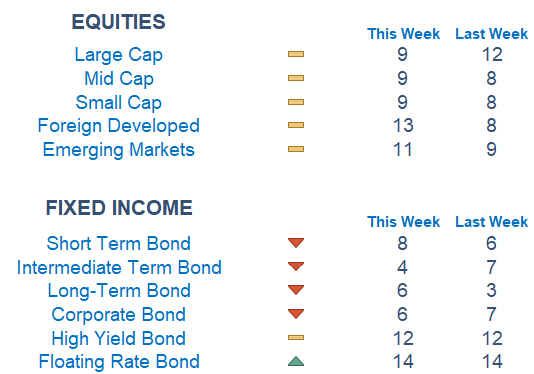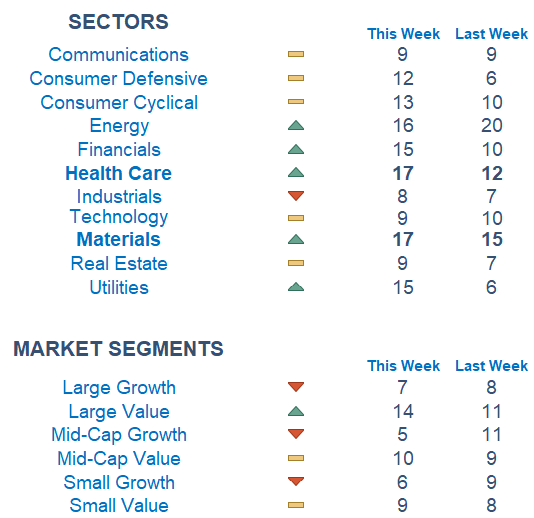We enter the week with small moves across asset classes. These types of moves on lower-than-average volume will likely be the theme until the key Fed decision on Wednesday.

This Week on Wall Street - Week of September 18th
Market Commentary
We enter the week with small moves across asset classes. These types of moves on lower-than-average volume will likely be the theme until the key Fed decision on Wednesday. Brent crude, the global oil benchmark is pushing toward $95 a barrel given the outlook for tighter supply. Saudi Arabia and Russia extended cuts this month. Looking at the technicals of the S&P 500, bulls are watching 4,430 as a level of support after Friday's sell-off erased all of the gains for the week. We've been in a volatile narrow trading range for nearly all of September.
Newton scores are still weak. Interestingly, value is edging out growth. Large caps hold a slight advantage over their smaller capitalization counterparts. The short end of the Treasury curve looks relatively more attractive as interest rates climb higher. Health Care and Materials are the highest-graded sectors while Industrials lag the most.
On the economic front: Earlier this morning investors learned that homebuilder sentiment fell to a 5-month low as higher rates are pushing many prospective buyers out of the market. Later in the week, we will get more data on the housing front with housing starts and existing home sales.
The biggest news flow this week in the US is the Federal Reserve's interest rate decision on Wednesday. It is consensus that the Fed will keep rates steady at 5.25%-5.5%. The key thing to analyze will be the Fed's economic forecast, aka the Summary of Economic Projections (SEP). The Fed has been clear as of late that they intended to keep rates high to continue to push inflation down to target. Last meeting, only 6 out of 18 officials thought the central bank was finished hiking.
Economic Releases This Week
Monday: Homebuilder confidence index
Tuesday: Housing Starts, Building Permits
Wednesday: Fed Interest Rate Decision
Thursday: Initial & Continuing Jobless Claims, US Leading Economic Indicators, US Current Account Deficit, Existing Home Sales
Friday: Flash US Services & Manufacturing PMIs, Minneapolis Fed President Speaks, San Francisco Fed President Speaks, Fed Gov. Lisa Cook Speaks
Stories to Start Your Week
UAW president Shawn Fain said yesterday that the union rejected an offer from one of the Big Three automakers for a 21% wage increase.
Instacart, the popular online grocer, is set to go public this week at a valuation as high as $ 10 billion. That number is way down from VC deals made at Covid's peak.
The restart of student loan payments could divert up to $100 billion from American's pockets over the coming year.
5 prisoners sought by the US in a swap with Iran have been freed and arrived in Qatar.
Search is underway for an F-35 Jet Fighter that went missing in South Carolina.

What is Newton?
Our Newton model attempts to determine the highest probability of future price direction by using advanced algorithmic and high-order mathematical techniques on the current market environment to identify trends in underlying security prices. The Newton model scores securities over multiple time periods on a scale of 0-20 with 0 being the worst and 20 being the best possible score. Trend & level both matter.


Technical trading models are mathematically driven based upon historical data and trends of domestic and foreign market trading activity, including various industry and sector trading statistics within such markets. Technical trading models, through mathematical algorithms, attempt to identify when markets are likely to increase or decrease and identify appropriate entry and exit points. The primary risk of technical trading models is that historical trends and past performance cannot predict future trends and there is no assurance that the mathematical algorithms employed are designed properly, updated with new data, and can accurately predict future market, industry and sector performance.
